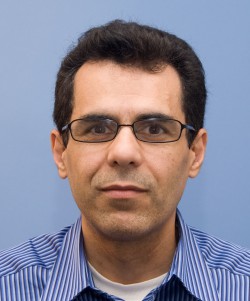Event Information:
Date and time: May 28, 2019; 1:00-2:30pm
Location: E2-599
Abstract:
In this talk, we discuss the concept of random coding for security. All prior information theoretic approaches for security use forward error correction coding techniques and modify them in order to provide security. We demonstrate that by designing codes just for security, we can achieve perfect secrecy that was originally introduced by Shannon in 1949. The original solution was not practical. This talk will introduce the first solution to achieve perfect secrecy with low overhead. Further, the result implies that we can replace encryption and achieve higher level of security.
Bio:
Hamid Sadjadpour received his Ph.D. degree in Electrical Engineering with an emphasis on communication theory from University of Southern California (USC) in 1996. During his Ph.D., he worked part-time at Lincom corporations between February 1994 and July 1995 as a member of technical staff. During this period, he worked on the design of communication systems for satellite applications. Since December 1995, he was with AT&T research Lab as a senior technical staff member. He was promoted to Principal technical staff member in 2000. During this time, he worked on the design of a new full-duplex DSL modem. One of his joint work in bit loading algorithm with NEXT and FEXT minimization capability has been accepted in T1E1.4 US standard for the next generation of DSL modems. He has also designed a Multi-tone Turbo TCM (MTTCM) technique for DSL modems and participated in development of the first DSL modem with Turbo code capability. In the fall of 2001, he joined the department of Electrical Engineering at University of California, Santa Cruz as an assistant professor where he is currently employed.


